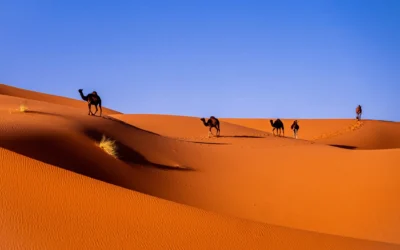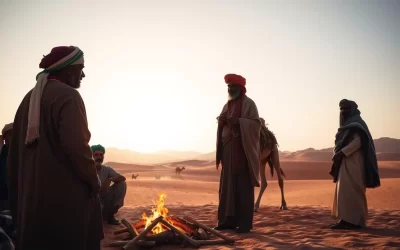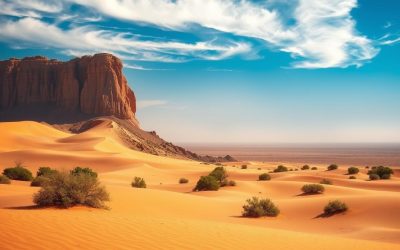✓ Accommodations✓ Flights✓ Rental Cars
As you venture into the vast desert expanse of Western Sahara, you’ll discover a region rich in cultural heritage and breathtaking landscapes. The desert setting, with its pristine beaches and sweeping sand dunes, provides a dramatic backdrop for the vibrant festivals that take place here.
These events offer a unique window into the region’s rich cultural heritage, showcasing the resilience and identity of the Sahrawi people. By participating in these festivals, you’ll gain a deeper understanding of the local culture and experience the traditions that have been preserved despite challenging circumstances.
As you travel through Western Sahara, you’ll find that these festivals are not just entertaining but also a vital part of the region’s heritage, connecting you with the history and social structures of the Sahrawi tribes.
Understanding Western Sahara’s Cultural Landscape
The cultural identity of Western Sahara is deeply rooted in the Sahrawi culture, shaped by the harsh desert environment and complex political history. As you explore this region, understanding its rich cultural heritage is crucial to appreciating the unique traditions and history of the Sahrawi people.
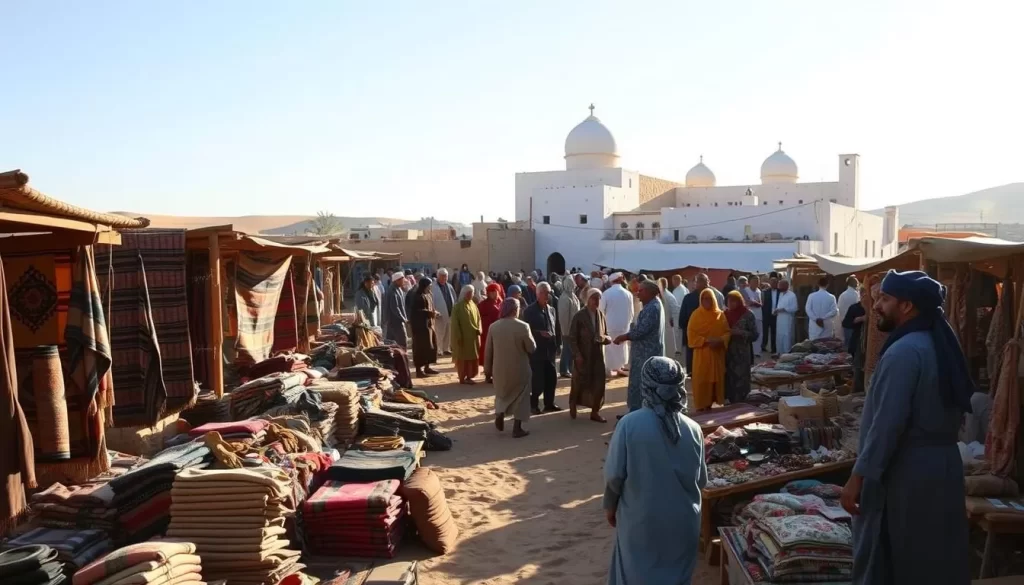
The Sahrawi People and Their Heritage
The Sahrawi people have a distinct cultural identity that blends Arab, Berber, and African influences, creating a unique cultural tapestry in the northwestern Sahara. Despite the challenges posed by the political situation in Western Sahara, the Sahrawi people have maintained their cultural heritage through various traditions and practices.
- The Sahrawi people have a rich oral tradition, with storytelling, poetry, and music playing central roles in their cultural practices.
- Their cultural heritage is also reflected in their traditional arts and crafts, which offer insights into their material culture and aesthetic sensibilities.
- Living in refugee camps has not diminished the Sahrawi people’s connection to their heritage; instead, festivals have become crucial links to their identity.
The Significance of Festivals in Desert Culture
Festivals in desert cultures like that of the Sahrawi people serve multiple purposes, including social gathering, cultural preservation, economic exchange, and spiritual expression. These events have historically been important meeting points for nomadic peoples, facilitating trade, marriage arrangements, conflict resolution, and cultural exchange.
| Aspect | Significance in Sahrawi Culture |
|---|---|
| Social Gathering | Festivals bring the community together, strengthening social bonds. |
| Cultural Preservation | Traditional practices and stories are passed down through generations. |
| Economic Exchange | Festivals provide opportunities for trade and commerce. |
| Spiritual Expression | Festivals often include spiritual rituals and ceremonies. |
By attending these festivals, you can gain a deeper understanding of the Sahrawi people’s cultural heritage and the significance of these events in their lives. The resilience and community solidarity celebrated during these festivals are a testament to the rich cultural identity of the Sahrawi people.
Boujdour Festival: A Celebration of Sahrawi Traditions
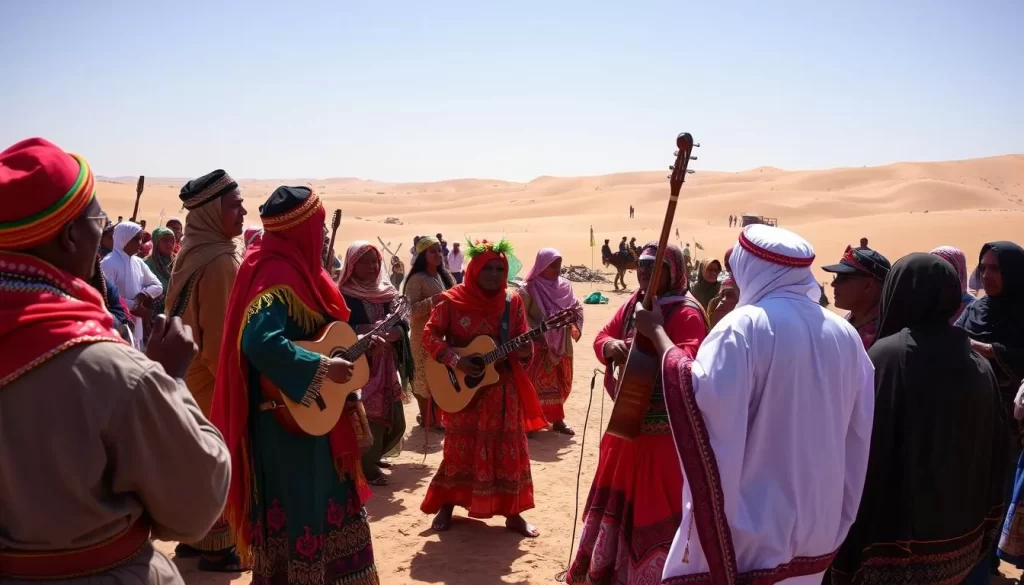
In the heart of Western Sahara, the Boujdour Festival brings together locals and travelers alike to celebrate Sahrawi culture. This vibrant event is a testament to the region’s rich heritage and its people’s strong connection to their traditions.
What to Expect: Music, Dance, and Art
The Boujdour Festival is a spectacular showcase of traditional Sahrawi music, featuring instruments like the guembri, a three-stringed lute, and various percussion instruments. The festival’s relaxed and community-driven atmosphere makes it an ideal event for cultural immersion.
You can expect to witness energetic community dances that involve locals of all ages, forming circles that symbolize unity and the cyclical nature of desert life. The festival also features a variety of art forms, including traditional handicrafts and textiles with geometric patterns that reflect Sahrawi aesthetic traditions.
Local Cuisine and Artisan Markets
One of the highlights of the Boujdour Festival is the opportunity to taste traditional Sahrawi cuisine, including mechoui (slow-roasted lamb), various tagines, and sweet mint tea prepared in the traditional multi-pouring ceremony. The artisan market at the festival offers a chance to purchase authentic handicrafts, such as leather goods and silver jewelry, providing a unique shopping experience.
Practical Information: Dates, Location, and Access
The Boujdour Festival takes place annually in October and lasts for three vibrant days. To plan your visit, it’s essential to book accommodations in advance, as facilities in Boujdour can be limited. The festival’s remote location in the desert region of Western Sahara adds to its unique charm, but it also requires careful planning to ensure a smooth and enjoyable experience.
You should also be prepared for the local climate and cultural norms, ensuring that your visit is respectful and enriching. With its rich cultural experiences and warm hospitality, the Boujdour Festival is an event not to be missed.
FiSahara Film Festival: Cinema in the Desert
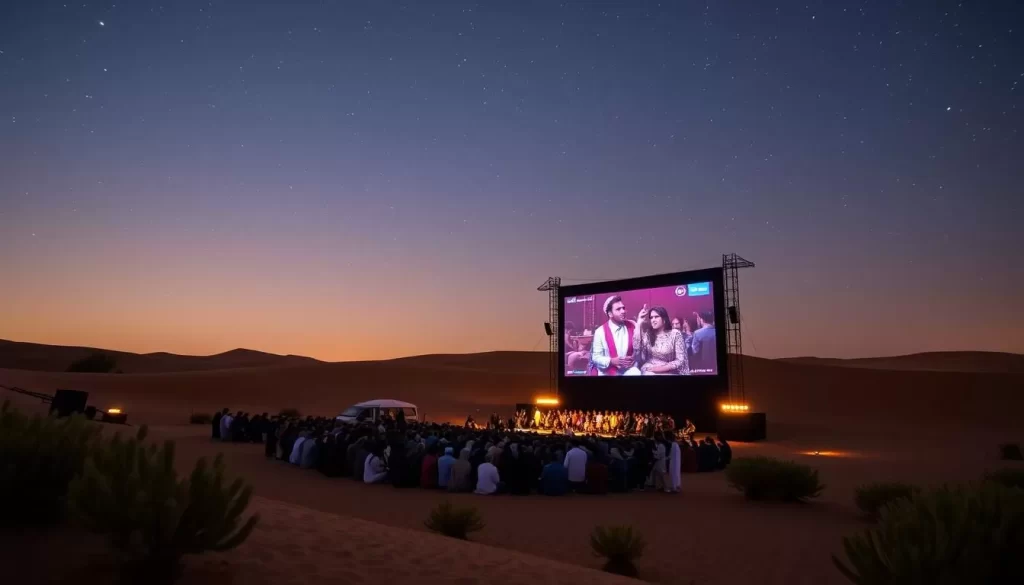
In the heart of the Sahara Desert, a unique cultural event unfolds, bringing together film, culture, and human rights activism. The FiSahara Film Festival is an annual celebration that takes place in the Sahrawi refugee camps, showcasing the resilience and creativity of the Sahrawi people.
The Story Behind This Unique Cultural Event
The FiSahara Film Festival began in 2003 as a collaboration between Sahrawi refugees and Spanish civil society. It has since grown into an internationally recognized event that not only brings entertainment and culture to the Sahrawi refugees but also raises awareness about the Western Sahara conflict.
Empowering the Sahrawi People: FiSahara seeks to empower the Sahrawi people through film as a form of self-expression, cultural resistance, and human rights activism. The festival features films about human rights, resistance, and Sahrawi experiences, alongside international selections.
Film Screenings and Cultural Exchange
The festival transforms the desert landscape with outdoor screenings under the stars. You’ll have the opportunity to experience a unique cultural exchange by staying with Sahrawi families in traditional desert tents called haimas, sharing meals and daily life.
The event includes not just film screenings but also workshops, concerts, and traditional cultural performances that showcase Sahrawi heritage, making it a rich cultural experience.
How to Attend and What to Bring
If you plan to attend FiSahara, be prepared for basic desert conditions. Bring essentials like a sleeping bag, flashlight, toiletries, and appropriate clothing for both hot days and cool desert nights.
The journey to the festival is part of the experience, typically involving a flight from Madrid to Algeria before being transported to the refugee camps.
Laayoune Moussem: Traditional Desert Gathering
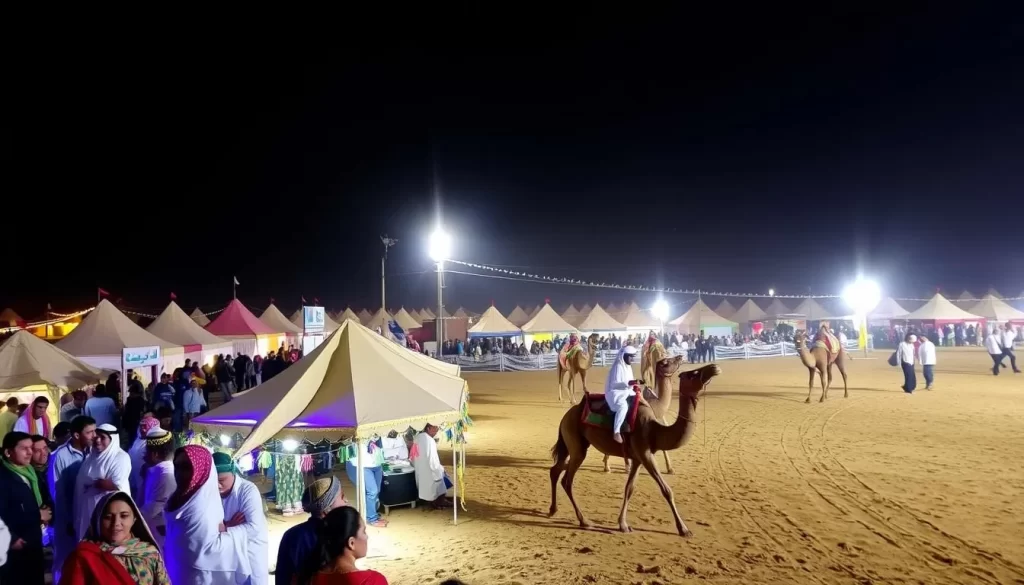
Laayoune Moussem, held annually in March, is a testament to the enduring cultural traditions of the Sahrawi people. This significant event in Western Sahara’s cultural calendar is a week-long celebration that brings together the community and visitors alike to experience the rich desert culture.
Ancient Traditions and Modern Celebrations
The Laayoune Moussem has deep historical roots, originally serving as a gathering for nomadic tribes to trade, arrange marriages, resolve disputes, and celebrate together. Over time, it has evolved into a vibrant festival that showcases the region’s cultural heritage through various activities.
You’ll witness a fascinating blend of ancient desert traditions and contemporary celebrations, featuring camel races, traditional horsemanship displays, and musical performances that highlight the region’s traditional music.
Visitor Information and Cultural Etiquette
As a visitor, you should respect local cultural etiquette by dressing modestly and asking permission before taking photographs of people. The festival takes place in and around Laayoune, Western Sahara’s largest city, making it relatively accessible.
You’ll have the opportunity to observe traditional crafts being made, including the weaving of rugs and tents, leatherwork, and jewelry-making techniques passed down through generations. The history and significance of these crafts are deeply intertwined with the time and place of the festival.
By attending Laayoune Moussem, you’ll experience the warmth of Sahrawi hospitality, including traditional tea offerings, which are an important part of the festival culture.
Tan-Tan Moussem: UNESCO-Recognized Cultural Heritage
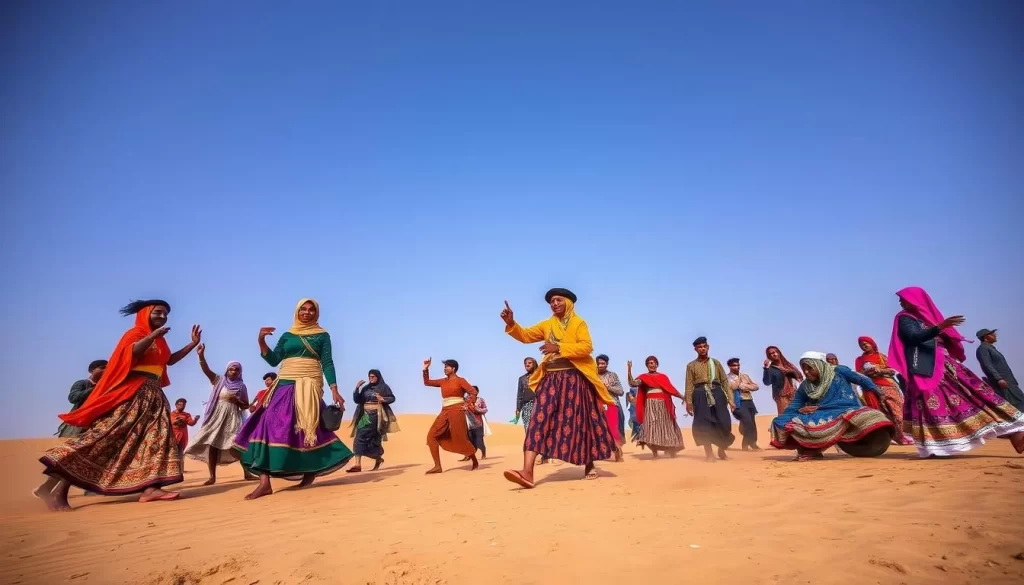
The Tan-Tan Moussem, a UNESCO-recognized event, is a testament to the enduring cultural heritage of Western Sahara. This significant festival, held every year in May, spans seven days and attracts participants from across the region.
Cultural Performances and Nomadic Traditions
The Tan-Tan Moussem is a celebration of nomadic traditions, featuring spectacular displays of horsemanship, including acrobatic feats and traditional “fantasia” cavalry charges. These performances demonstrate skills that were once crucial for desert warfare and hunting, offering a glimpse into the region’s rich history.
The festival serves as a living museum of nomadic culture, with traditional tent encampments, craft demonstrations, and trading activities that recreate historical desert gatherings. You’ll have the opportunity to experience the vibrant cultural practices of Western Sahara firsthand.
Planning Your Visit to This Historic Festival
To make the most of your visit to the Tan-Tan Moussem, it’s essential to plan ahead. Accommodations tend to fill quickly during the festival period, so consider booking in advance or staying in nearby towns if Tan-Tan itself is fully booked.
Your travel guide should include practical information about transportation options, as reaching Tan-Tan may require arranging private transport or navigating limited public transportation schedules. With proper planning, you’ll be able to fully immerse yourself in the festival’s rich cultural heritage.
By attending the Tan-Tan Moussem, you’ll be experiencing a unique aspect of Western Sahara’s cultural identity, recognized by UNESCO for its significance to the world’s cultural heritage. This festival is a true celebration of the region’s history, traditions, and cultural practices, making it an unforgettable experience for any visitor.
Western Sahara: Top Festivals to Check Out When Visiting Throughout the Year
Throughout the year, Western Sahara hosts various festivals that showcase its unique desert culture. These events are deeply rooted in the region’s history and traditions, offering visitors a chance to experience the rich cultural heritage of the Sahrawi people.
Seasonal Festival Calendar
Western Sahara’s festival calendar is carefully planned around the seasonal changes in the desert climate. You’ll find that many major festivals are scheduled during the more temperate months, making it comfortable for attendees to enjoy the celebrations without the harsh desert conditions.
- The winter months (November to February) are ideal for festival attendance, with comfortable temperatures ranging from 15-25 degrees Celsius (59-77°F) during the day.
- The spring (March-May) and fall (September-November) shoulder seasons host significant festivals like the Laayoune Moussem and Boujdour Festival, offering pleasant weather conditions.
- Summer months (June-August) are best avoided due to extremely high temperatures often exceeding 40 degrees Celsius (104°F).
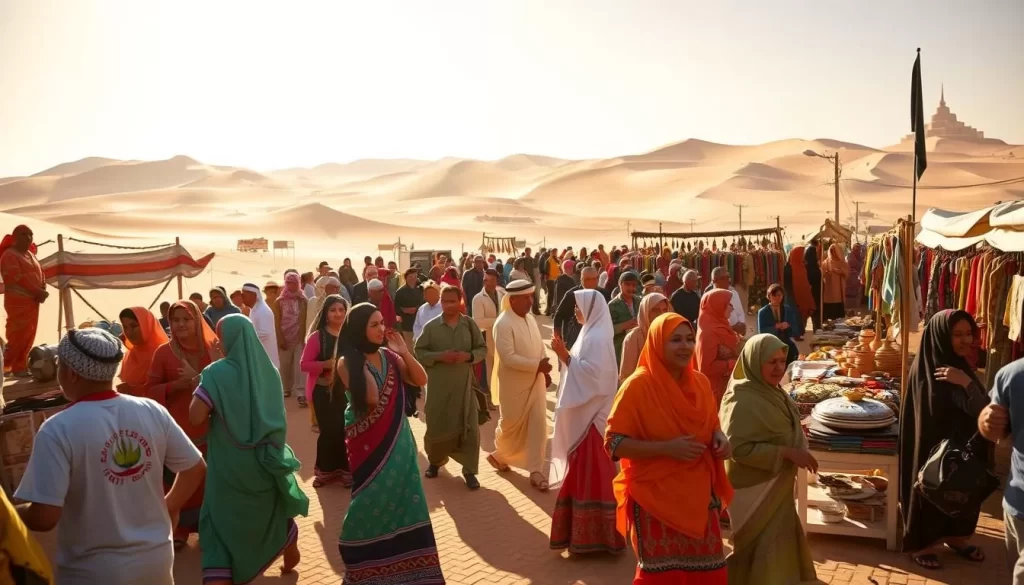
Weather Considerations and Best Times to Visit
When planning your visit to Western Sahara’s festivals, it’s essential to consider the desert climate and its extreme temperature fluctuations. Even during the comfortable festival periods, be prepared for hot days and cooler nights.
Best Time to Visit: The winter period from November to February is considered the best time to visit Western Sahara for festivals, offering mild temperatures ideal for outdoor activities.
To make the most of your festival experience, ensure you plan your itinerary considering travel times between locations, as distances can be substantial and transportation infrastructure may be limited in remote areas.
By understanding the seasonal festival calendar and weather considerations, you can have a memorable and enjoyable experience at Western Sahara’s vibrant cultural events.
Practical Tips for Festival-Goers in Western Sahara
Western Sahara’s festivals offer a unique cultural experience, but visitors need to be aware of a few key factors to ensure a smooth trip. As you prepare for your journey, it’s crucial to understand the practical aspects that will enhance your travel experience.
Accommodation and Transportation Options
When attending festivals in Western Sahara, particularly in remote areas, it’s advisable to join organized tours that provide transportation, accommodation, and cultural guidance. This is especially true if you’re visiting the Sahara Desert for the first time. Accommodation options vary widely, ranging from basic guesthouses in towns to traditional tent camps at festival sites. You should adjust your expectations and pack accordingly.
For instance, if you’re planning to attend the Boujdour Festival or the Tan-Tan Moussem, you can expect a range of accommodation options. However, it’s always a good idea to book in advance to ensure availability.
| Festival | Accommodation Options | Transportation |
|---|---|---|
| Boujdour Festival | Basic guesthouses, traditional tent camps | Organized tours, local transport services |
| Tan-Tan Moussem | Traditional tent camps, camping facilities | Organized tours, shuttle services |
| FiSahara Film Festival | Luxury tents, local hotels | Private transfers, local transport |
Cultural Sensitivity and Safety Considerations
Respecting local customs is essential when attending festivals in Western Sahara. You should dress modestly, covering your shoulders and knees, and ask permission before photographing people. Be mindful of religious practices, particularly during Ramadan if your visit coincides with this period.
It’s also crucial to prepare for the desert climate by staying hydrated, protecting yourself from the sun, and being aware that medical facilities may be basic or distant from festival sites. Consider bringing necessary medications and learning a few basic Arabic phrases, which will be appreciated by locals.
- Check current travel advisories before planning your trip to Western Sahara.
- Join organized tours for transportation, accommodation, and cultural guidance.
- Pack according to the accommodation type and desert climate.
- Respect local customs and dress modestly.
- Prepare for limited connectivity and download essential information in advance.
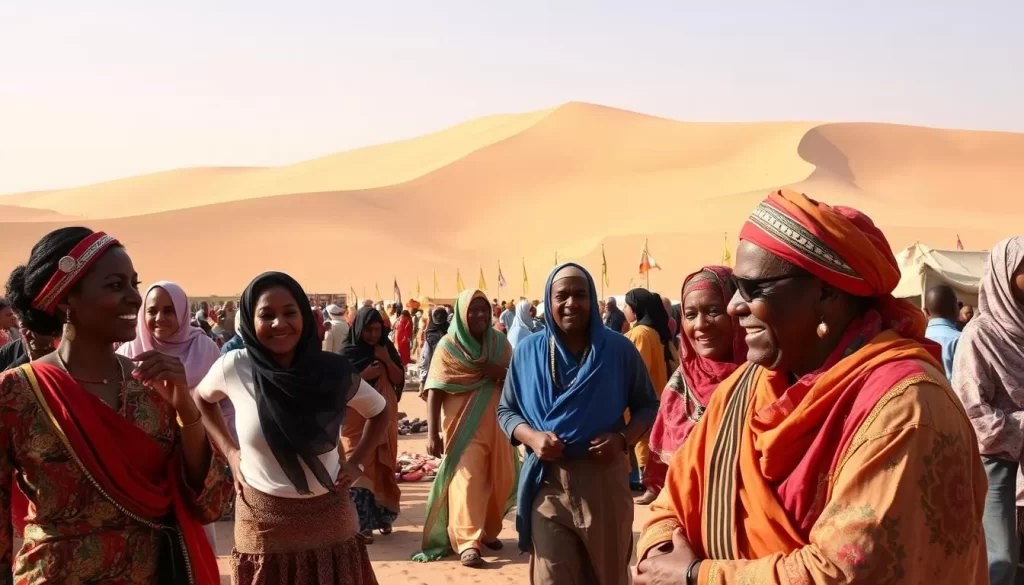
By being aware of these practical considerations, you can make the most of your festival experience in Western Sahara. Whether you’re attending the FiSahara Film Festival or the Laayoune Moussem, your trip is sure to be a memorable one.
Conclusion: Experiencing the Rich Cultural Tapestry of Western Sahara
As you immerse yourself in Western Sahara’s vibrant cultural scene, you’ll discover the profound significance of its festivals. The region’s cultural celebrations are not just entertaining events, but also serve as a means of resistance and preservation of identity in the face of political challenges.
The festivals of Western Sahara, such as the Boujdour Festival and FiSahara Film Festival, offer a rare window into traditions that have survived despite decades of conflict, showcasing the resilience and creativity of the Sahrawi people. Your participation as a visitor helps bring international attention to both the rich cultural heritage and the ongoing situation in Western Sahara, shedding light on a region often overlooked in global discourse.
During these festivals, you’ll have the opportunity to connect with local people, creating lasting impressions and fostering cross-cultural understanding that extends far beyond your travel experience. You’ll find that Western Sahara’s festivals reveal how music, poetry, film, and storytelling serve as powerful vehicles for preserving identity and expressing hopes for the future.
The contrast between ancient traditions and contemporary adaptations visible at these festivals demonstrates how Sahrawi culture continues to evolve while maintaining its distinctive character. Your journey through Western Sahara’s festival landscape offers a form of cultural immersion that few other destinations around the world can match, combining natural desert beauty with profound human expression.
As you reflect on your experiences, you’ll recognize how these festivals represent not just entertainment but vital gathering spaces where community bonds are strengthened and cultural knowledge is transmitted to younger generations. In Western Sahara, you’ll experience a unique cultural identity that is both captivating and enriching.
The above is subject to change.
Check back often to TRAVEL.COM for the latest travel tips and deals.


